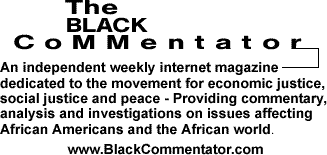
| |
|
2, 3, Many Trayvon
Martins?
The African World
By Bill Fletcher, Jr.
BlackCommentator.com Editorial Board
One of the most striking features of the Trayvon Martin case has been the revelation of similar such lynchings taking place, whether carried out (or allegedly carried out) by law enforcement authorities or individual, non-state perpetrators of violence in the recent past. We have to, therefore, ask ourselves why are these cases emerging and what do we need to do about them?
Trayvon
Martin’s case must be understood to be a lynching. It was an extra-judicial
killing in a long line of extra-judicial killings carried out in the history
of the
Justice for the victims of lynchings is incredibly difficult to achieve precisely because the lynchings do not take place in isolation yet are portrayed as such. This is what makes the racial disparity in the responses to the Martin killing so important to note. When each killing is viewed outside of the larger context of racist oppression - which is the tendency of many, if not most middle aged to older whites - one can debate particularities and act, in effect, as if the killing was either an accident or an unusual occurrence. In other words, in order to defend the name of Trayvon Martin and to gain justice, the lynching must be placed in the larger context. Just as with the anti-lynching movement of much of the 20th century, each individual case of lynching must be publicized and listed along with other cases. The lynchings must be seen for what they are, i.e., part of a pattern.
While
fighting each case, whether that of Trayvon Martin or the police shooting
of Kenneth Chamberlain (in
Wrong response. We need to nationalize these struggles. This is happening in the Trayvon Martin case, where demonstrations have been taking place around the country. Rather than keeping the struggle localized, the organized outrage in response to his killing has become well known, in part as a result of the Internet.
Second, we need a movement against “Stand Your Ground” legislation. This will need to be nationally coordinated and, perhaps, take the form of the anti-lynching campaigns of the 20th century. The question as to whether the aim is one piece of national legislation or multiple state-wide campaigns will have to be studied, but we need to flip these “Stand Your Ground” acts on their head and show them to be what they are, forms of returning us to the days of the Wild West, the posse and lynch-mobs.
Third, we need to rethink “neighborhood watch” programs. In general such programs have focused on criminal elements entering various communities. Neighborhood watch in communities of color needs to be re-envisioned to also include keeping our eyes on the police. In the late 1960s the Black Panther Party would follow the police around. This can be highly dangerous, but organizing one’s community to be observant of both criminal activity and police abuse is a different matter. In this technological era, filming the activities of the police are becoming more and more common.
When the furor fades in the case of Trayvon Martin, as it will inevitably do, we have to make sure that there is a level of consciousness and organization built to carry on the justice struggle. We seem to be entirely too surprised and too unprepared each time there is a new lynching, whether it is carried out by rogue, racist assailants or abusive and unaccountable police. Enough!
BlackCommentator.com Editorial Board member, Bill Fletcher, Jr., is a Senior Scholar with the Institute for Policy Studies, the immediate past president of TransAfricaForum and co-author of Solidarity Divided: The Crisis in Organized Labor and a New Path toward Social Justice (University of California Press), which examines the crisis of organized labor in the USA. Click here to contact Mr. Fletcher.